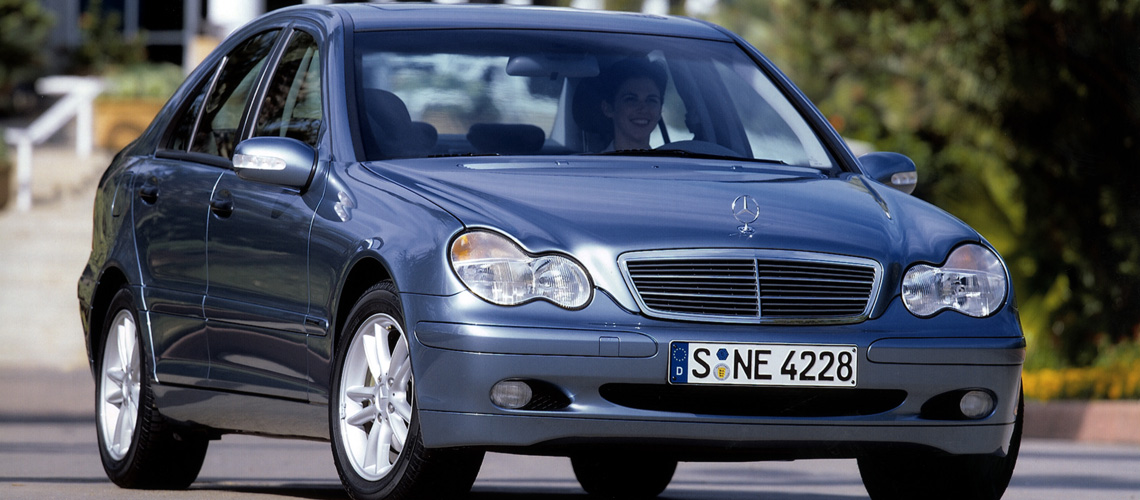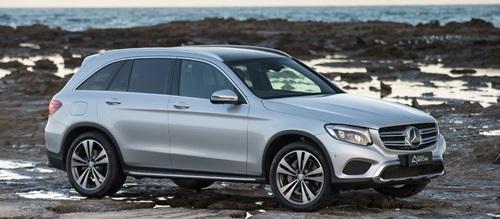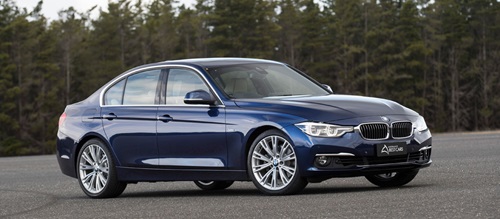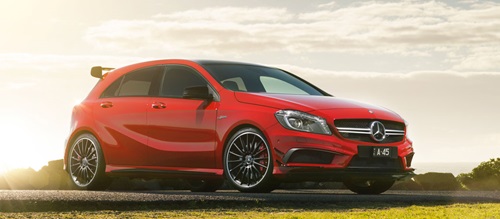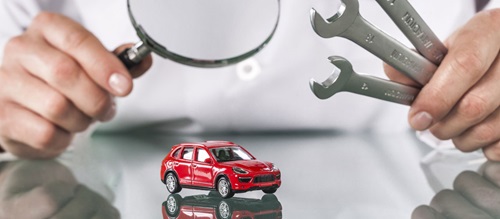Specifications |
|
| Priced from | $60,200 |
| Engine | 2.0-litre |
| Transmission | 6-speed man or 5-speed auto |
| Fuel Economy |
10
AVG
|
| Output | NA |
| ANCAP rating |
|
The Mercedes-Benz C-Class has been a sales hit since its launch in November 2000. The C200K is arguably the pick of the range in value for money terms.
Value for money
Pricing
The C200K Classic sedan costs $60,200 for the six-speed manual, or $63,300 for the five-speed sequential automatic. The Avantegarde is $65,700/$68,800, while the top of the line Elegance model is $66,200/$69,300.
The three variants are also available as a wagon, starting at $66,800 for the Classic.
Warranty
Three years/unlimited kilometres, which is above average.
Standard features
Standard in the Classic are automatic airconditioning, power windows and mirrors, remote central locking, cruise control, a CD player, trip computer and front fog lights.
As usual with Benz, the options list is long and expensive.
Retained value
Glass's Guide lists the C200K sedan at 65 per cent after three years, which is average.
Design and function
Ergonomics
The driver's seat cushion is a bit short for long legs, though there is plenty of travel and power adjustment for height/tilt and backrest angle. The wheel is also height adjustable.
The driver faces a multi-function wheel (audio, and, when available, navigation systems) and S Class style dash, with a simple instrument panel containing only three dials (large central speedo, small side tacho and fuel gauge) with other information supplied by a central digital display.
Vision is fine around the car, though the side mirrors are small.
Innovation
The C-Class has many filter-down technical features from the S Class limousine, including extensive use of fibre optic audio and telephone signal transmission, front airbags with variable deployment, (according to the severity of impact) side airbags in all doors, side window bags, darkness-activated headlights, and many programmable functions.
The fitting of a supercharger to the 2.0 litre engine is a relatively unusual, and effective, method of increasing power and torque.
Brake Assist applies maximum power to the ABS system when pedal pressure exceeds a certain point. The Electronic Stability Program, which detects then corrects skids, plus traction control, have also made their way down from the E and S Classes.
Safety
Most of the C-Class's safety features are detailed above under Innovation. Any Mercedes-Benz is engineered to the highest safety standards.
Security
C-Class security is comprehensive. An electronic key, which dispenses with the conventional mechanical device, controls the remote locking/unlocking and immobiliser/ignition functions.
Comfort
The driver's seat base - quite hard in typical Benz fashion - is hinged at the front and sprung at the back. Heavier drivers may find it very uncomfortable.
Space and Practicality
The C's back seat is slightly wider than the previous model, but tighter for head, knee and leg room. The seat itself is more generously padded than the fronts, but taller adults (over 175 cm) will find access, and overall space, surprisingly restrictive. Three lap/sash belts and retractable head restraints are fitted.
Boot space is average, and cannot be extended. You have to pay extra for a split/fold rear-seat back, which is ridiculous.
Build and finish quality
The cabin is, as you would expect, trimmed and finished to the highest standards, while the body is exceptionally tight and solid.
On the road
Fuel efficiency
Fuel economy - 7-9 litres/100 km on the highway and 11-12 litres/100 km around town - is excellent, rivalling many less powerful, naturally aspirated four-cylinder engines.
Performance
The supercharger lifts performance of the 2.0-litre four to the point where it is a very satisfying drive. On paper at least, it is almost equal to the 2.4-litre V6.
There's a flat spot between 1500 and 2000 rpm where the supercharger is still spinning-up to effective operation.
Thereafter, peak torque occurs at a low 2500 rpm, and there's a strong elastic surge from here all the way to the 6200 rpm redline. The Kompressor is a great cruising car, with a relaxed six-cylinder-style gait. The adaptive automatic short shifts when taking it easy in town, but quickly and smoothly kicks back a gear or two when you need the midrange for overtaking.
In manual mode, the transmission works reasonably well, but often overrides your intention - it thinks you want to wring the most out of each gear, so you're ignored when you change up.
Ride
The firm suspension produces a ride which, while always compliant and never harsh, is less supple than the E Class. As with handling, ride comfort improves as speeds rise and the road surface deteriorates.
Handling and steering
Benz sedans are renowned for their rock solid high-speed handling, especially on our poor roads. The new C is no exception. The C-Class is still not quite as tactile and involving as a 3 Series, but it's close. Rack and pinion steering is more accurate, with greater road feel than the previous model's recirculating ball system, but initial turn-in could be sharper and your connection with the bitumen remains comparatively remote.
The suspension is quite firm by Benz standards. This gives the C a flatter cornering attitude and greater balance when changing direction quickly.
Braking
The brakes, like the steering, are a touch spongy and dead at low pressures, but when necessary operate with great power, control and stability.
Smoothness and quietness
Excellent. The supercharged four-cylinder engine in particular is as smooth and quiet as a good six-cylinder powerplant.
Summary
The C200K comes into its own as a long distance touring car which handles and rides beautifully on country roads. It is well priced, but you need to check if the driver's seat, and rear space, are acceptable.







